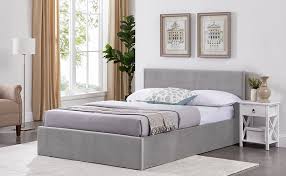Choosing a new mattress can feel like a monumental task. It’s a significant purchase, one that you’ll literally be spending a third of your life with. No pressure, right? If you’re feeling a little lost in a sea of memory foam, pocket springs, and confusing jargon, you’ve come to the right place.
This guide is designed to cut through the noise and help you find the best mattress in NZ for your specific needs. We’ll walk you through the different types of mattresses, what to look for based on your sleeping style, and how to make a decision that will have you sleeping soundly for years to come. Think of us as your friendly, slightly-less-sleep-deprived companion on this important journey.
Understanding the Mattress Maze: Types and Materials
First things first, let’s break down the main types of mattresses you’ll encounter. Each has its own unique feel and set of benefits.
Innerspring Mattresses
This is the traditional mattress most of us grew up with. Innerspring mattresses use a system of steel coils for support.
- Bonnell Coils: These are hourglass-shaped and interconnected, making them durable and generally more affordable.
- Pocket Springs: Individual coils are wrapped in fabric pockets. This allows them to move independently, providing better motion isolation (so you won’t feel your partner tossing and turning) and more targeted support.
Innerspring mattresses are known for their firm support and breathability, as air can circulate freely through the coils. They offer that classic bouncy feel.
Memory Foam Mattresses
Popularized by NASA (yes, really), memory foam, or viscoelastic foam, is designed to contour to your body in response to heat and pressure. This creates a “hugging” sensation that many people find incredibly comfortable.
Memory foam is excellent for pressure relief, particularly around the hips and shoulders, making it a great choice for side sleepers. It also provides fantastic motion isolation. A common complaint used to be that memory foam “sleeps hot,” but modern versions often include cooling technologies like gel infusions or open-cell structures to improve airflow.
Latex Mattresses
Latex mattresses are made from either natural or synthetic rubber. They offer a responsive, bouncy feel that’s similar to innerspring but with the contouring properties of foam.
- Natural Latex: Harvested from rubber trees, it’s a durable, hypoallergenic, and environmentally friendly option.
- Synthetic Latex: Made from petroleum-based compounds, it’s less expensive but not as durable or eco-friendly as its natural counterpart.
Latex is known for being highly durable and breathable. It provides excellent support and a bit more “push-back” than memory foam, so you feel like you’re sleeping on the bed rather than in it.
Hybrid Mattresses
Can’t decide between springs and foam? A hybrid mattress offers the best of both worlds. These mattresses combine a core of innerspring coils (usually pocket springs) with comfort layers of memory foam, latex, or other materials.
The goal of a hybrid is to provide the sturdy support and bounce of an innerspring mattress with the pressure relief and contouring of foam or latex. For many people, a hybrid mattress NZ is the perfect compromise, delivering a balanced and supportive sleep experience.
Finding Your Fit: Sleeping Position Matters
How you sleep is one of the most critical factors in choosing the right mattress NZ for your sleeping habit. Your preferred position determines where you need the most support to keep your spine aligned.
Side Sleepers
If you sleep on your side, you need a mattress that can cushion your shoulders and hips to prevent pressure points. A mattress that is too firm will cause discomfort, while one that is too soft will let you sink in too far, misaligning your spine.
Best choice: Medium-soft to medium-firm mattresses are ideal. Memory foam and hybrid mattresses are excellent options for side sleepers due to their pressure-relieving qualities.
Back Sleepers
Sleeping on your back is great for spinal alignment, but only if your mattress provides the right support. You need a surface that supports the natural curve of your lower back without letting your hips sink too low.
Best choice: A medium-firm to firm mattress works well. This will provide enough support to keep your spine in a neutral position. Innerspring, latex, and hybrid mattresses are all strong contenders.
Stomach Sleepers
Stomach sleeping can put a lot of strain on your neck and spine. If this is your go-to position, you need a firm mattress to prevent your hips and abdomen from sinking, which can cause your spine to curve unnaturally.
Best choice: A firm mattress is non-negotiable. Look for firm innerspring, latex, or hybrid models that will keep your body on a level plane.
The Little Details That Make a Big Difference
Beyond mattress type and firmness, there are a few other elements to consider on your quest for the perfect mattress nz.
- Motion Isolation: If you share your bed, motion isolation is key. Memory foam and pocket spring hybrids are typically the best at preventing you from feeling every move your partner makes.
- Edge Support: Good edge support means you can use the entire surface of the mattress without feeling like you’re about to roll off. This is particularly important if you tend to sit on the edge of the bed. Innerspring and hybrid mattresses usually have reinforced edges for better support.
- Temperature Regulation: If you tend to overheat at night, look for mattresses with cooling features. Latex and innerspring mattresses are naturally more breathable, while many modern foam mattresses incorporate cooling gel, copper infusions, or perforated designs to dissipate heat.
- Trial Periods and Warranties: Many “bed-in-a-box” companies in New Zealand offer generous trial periods (often 100 nights or more). This allows you to test the mattress in your own home, which is far more effective than lying on it for five minutes in a showroom. Always check the warranty details, too—a good mattress should have a warranty of at least 10 years.
Your Next Steps to Sweet Dreams
Buying a new mattress is a personal decision, but it doesn’t have to be a stressful one. By understanding the different types of mattresses, considering your sleeping style, and paying attention to the details, you can make an informed choice. Remember to take advantage of in-home trial periods to ensure you’ve found the one. After all, a good day starts with a good night’s sleep, and the right mattress is the foundation for just that.

